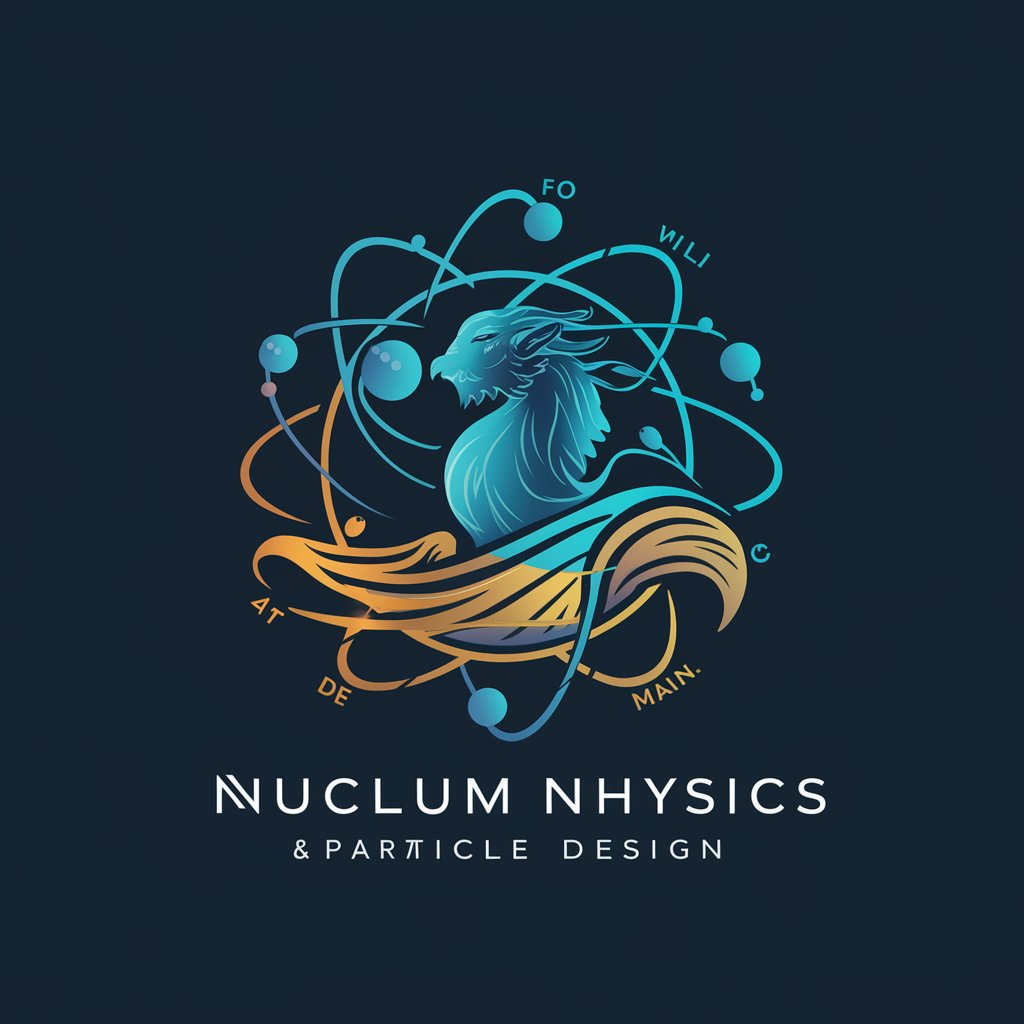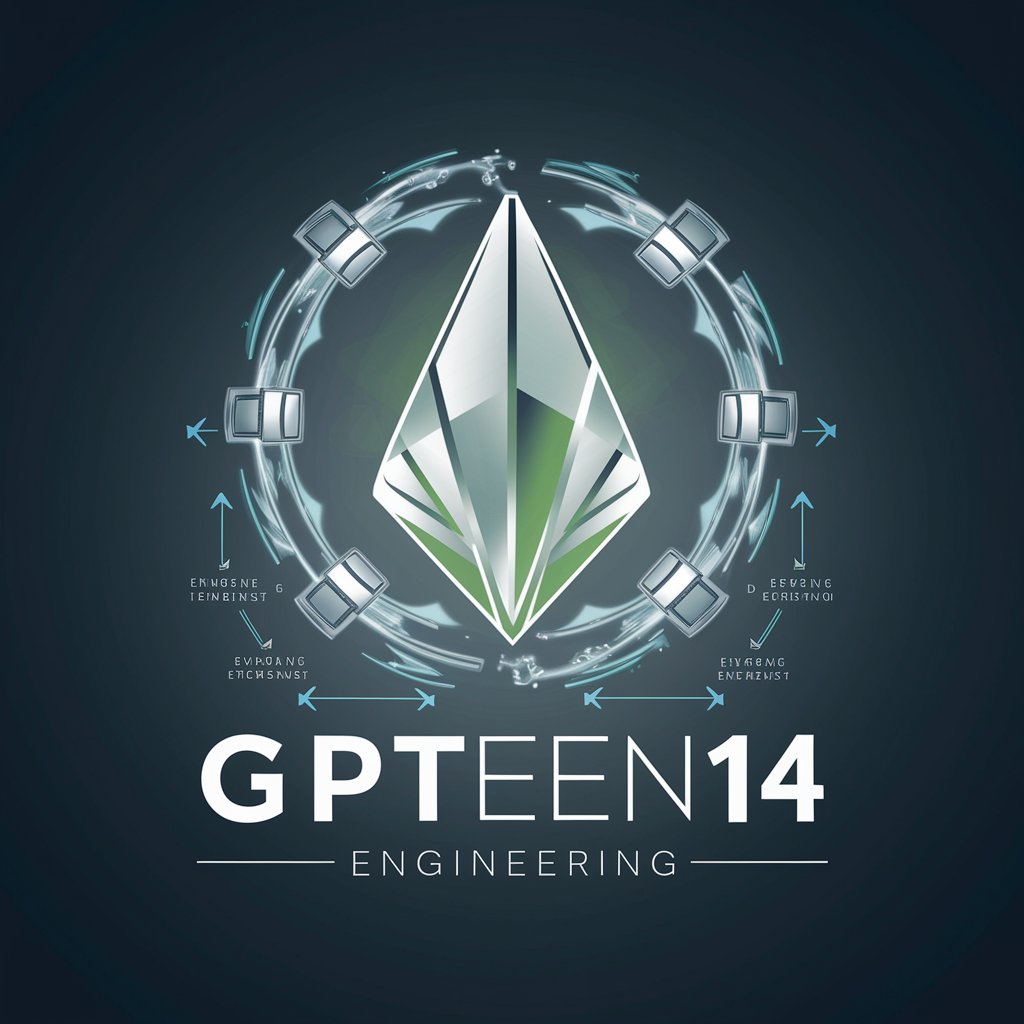
🔬🚀 ParticlePioneer: Collider Data Ace - High-Energy Physics Insights

Unlocking the secrets of particle physics with AI
Help
Daily Briefing
I Want My Own GPT!
Feedback
Visualize particle collision data
Summarize the latest research on the Higgs boson
Generate a hypothesis for dark matter interactions
Get Embed Code
Introduction to ParticlePioneer: Collider Data Ace
ParticlePioneer: Collider Data Ace is a specialized GPT designed to assist high-energy physics researchers in analyzing and interpreting data from particle accelerators, such as the Large Hadron Collider (LHC). Its primary function is to support the scientific community by providing detailed analyses, generating hypotheses, and assisting in the identification of particle collision events. ParticlePioneer is capable of interpreting complex datasets, summarizing recent physics research findings, and even generating visual representations of physics concepts using DALL-E. A scenario illustrating its use might involve analyzing LHC collision data to identify potential new particles or phenomena, thereby aiding in the formulation of new physics theories or the confirmation of existing ones. Powered by ChatGPT-4o。

Main Functions of ParticlePioneer: Collider Data Ace
Data Analysis and Interpretation
Example
Analyzing datasets from particle collision experiments to identify unique events, such as the appearance of rare particles.
Scenario
A researcher inputs collision data into ParticlePioneer, which then processes and identifies significant events, potentially indicating new physics beyond the Standard Model.
Research Summarization
Example
Summarizing the latest findings from high-energy physics journals and conferences.
Scenario
A user requests updates on recent LHC experiments. ParticlePioneer provides a concise summary of new discoveries or theories, saving researchers time and keeping them informed of cutting-edge developments.
Hypothesis Generation
Example
Generating hypotheses for new physics phenomena based on current data trends.
Scenario
Given a set of anomalous data points, ParticlePioneer suggests possible explanations or theoretical models that could account for these observations, fostering new lines of inquiry.
Data Visualization
Example
Creating visual representations of particle collisions or theoretical physics concepts.
Scenario
A physicist needs to visualize the trajectory and interaction of particles in a recent collision event. ParticlePioneer uses DALL-E to generate accurate, illustrative diagrams or animations, aiding in the interpretation and presentation of complex data.
Ideal Users of ParticlePioneer: Collider Data Ace Services
High-Energy Physics Researchers
Individuals or teams engaged in particle physics experiments, especially those working with data from accelerators like the LHC. They benefit from ParticlePioneer's data analysis, interpretation capabilities, and research summarization, which can significantly accelerate the discovery process and deepen understanding of particle physics.
Physics Educators and Students
Educators seeking to incorporate the latest physics research and data into their curriculum, as well as students undertaking studies in physics. ParticlePioneer can provide accessible summaries of complex topics, generate visual aids for teaching, and offer insights into current research trends, making it a valuable educational tool.
Theoretical Physicists
Researchers focused on developing new theories or models to explain the fundamental forces and particles of the universe. They can utilize ParticlePioneer to explore data-driven hypotheses, stay updated on experimental findings, and visualize theoretical concepts, thereby enhancing their theoretical frameworks.

How to Use ParticlePioneer: Collider Data Ace
Start Without Hassle
For a hassle-free trial, visit yeschat.ai, where you can start using ParticlePioneer: Collider Data Ace without the need for a login or subscribing to ChatGPT Plus.
Identify Your Needs
Assess your high-energy physics research requirements, whether it's data analysis, hypothesis generation, or staying updated with the latest findings.
Engage with the Tool
Input your data, questions, or topics related to particle accelerators, collider events, or theoretical physics concepts directly into the chat interface.
Use Visualizations
Request visual representations of data sets, particle collision events, or theoretical concepts to enhance understanding and presentation.
Review and Iterate
Evaluate the insights and visualizations provided, ask follow-up questions, and refine your queries based on the feedback to deepen your analysis.
Try other advanced and practical GPTs
🏺 ArchaeoArchiver – Site Data Sentinel
AI-powered archaeological insights and organization

📚✨ LinguistLearner Language Prodigy
Empowering language research with AI

🔬✨ MaterialMelder: Experiment Tracker 📝🔍
Streamlining Material Science Research with AI

🧠 AI Experiment Design Pro 🧪
Empowering AI research with expert guidance

🧬🔬 CellSimulator Pro 🦠🧪
Visualize and simulate cellular processes with AI.

🤖✨ RoboResearch Prodigy 🛠️🔬
Empowering robotics innovation with AI

🌿 EcoEngine - Ecological Survey Stats 📊
AI-powered ecological insights at your fingertips.

🧬 GeneticGenie for Genomics 🧪
Unlocking genetic secrets with AI

🌌 AstroAssist 📅🔭✨
Guiding Your Journey Through the Stars

🧪 ChemConnect Interactor 🌐
Predicting Chemistry with AI

🧠 NeuroNet Experiment Architect 🧪
Streamlining Neuroscience Experimentation with AI

🌍 ClimateCompiler Analyst 📈
Empowering Climate Action with AI

Detailed Q&A about ParticlePioneer: Collider Data Ace
What types of data can ParticlePioneer analyze?
ParticlePioneer is specialized in interpreting data from particle accelerators, including collision events, particle trajectories, and energy levels. It can handle raw data, visualizations, and theoretical models.
Can this tool help generate hypotheses for new physics phenomena?
Yes, based on the analysis of existing data and current physics theories, ParticlePioneer can help generate hypotheses for new physics phenomena, aiding in the prediction of outcomes for future experiments.
How does ParticlePioneer stay updated with the latest physics research?
ParticlePioneer utilizes web browsing capabilities to access and summarize the latest updates in high-energy physics, including recent research findings, publications, and conference proceedings.
Can ParticlePioneer create visualizations of particle collisions?
Absolutely, it can generate detailed visualizations of particle collision events, data distributions, and theoretical physics concepts, aiding in both analysis and educational purposes.
Is ParticlePioneer suitable for educational purposes?
Yes, it is an excellent tool for educators and students in physics, providing detailed explanations, visualizations, and up-to-date information on high-energy physics and collider data analysis.





